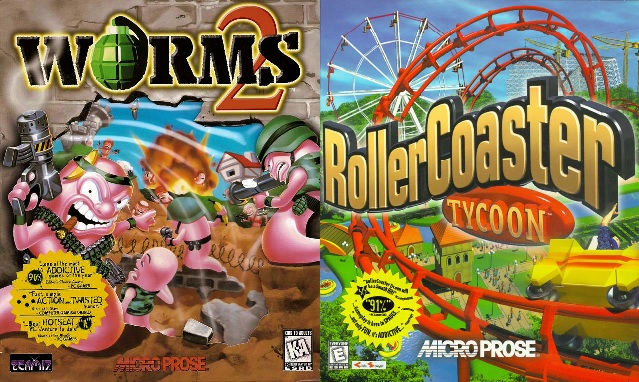Blasting the Darkness: My Start With LucasArts
- baronsfel001
- Aug 28, 2021
- 5 min read

Family life has been dynamic lately, but I wanted to get at least one post made for August. Since we last left off with MicroProse it was the culmination of their 1982 debut. Another key game company in my life also launched in 1982, this one on the west coast from a burgeoning multimedia empire.
When my parents got a Creative Labs multimtedia kit for our DTK 486 it came with a sampler CD with the full version of Full Throttle and the limited 3-level "Special Edition" of Star Wars: Dark Forces. Even though I had heard of the Indiana Jones and Star Wars franchises I had yet to see any of either in the mid-1990s, which made Dark Forces my introduction to the both the Star Wars universe and Lucasfilm. If only I could tell back then how large and varied a universe I had stepped into through that ventilation shaft on Danuta.
My assessment looking back first says the fact that I am a big fan of this company and its offerings shows what impact it had. Full Throttle is one of the simplest adventures (second to Loom) in the LucasArts catalog, and with its significant action and audiovisual flair it was a great introduction to the genre. While I personally would never warm up much to adventure games, I make a key exception for LucasArts and their derivatives (i.e. Telltale's Sam & Max releases) because of how classic they all are.
However it is Dark Forces that has stuck with me over all these years, to the point that I still make a complete playthrough about once a year on average; I find it that enjoyable despite how much time and technology has moved past it, and don't come back to its superior sequels as much as I do the original. I played the 3 levels I had over and over again, finally mastering the frustrating sewage labyrinth of Anoat and wanting more. That chance came in 1998 when my parents granted my request for an early birthday present when we saw LucasArts Archive Volume IV on the shelf at Staples.
My hobby took off from there, as the following year I started my lawn mowing business which enabled my own purchase of Jedi Knight: Dark Forces II, X-Wing vs. TIE Fighter, and a Microsoft Sidewinder joystick to control the latter. Both titles, it turns out, were multiplayer-oriented, but a lack of internet connection for my personal computer meant I never got to experience that side of gaming back in the day. Thus I was most-oriented towards single-player, which probably reflects my greater enjoyment of X-Wing, TIE Fighter and Dark Forces over any of its sequels.
Not that I lack enjoyment of any of the others. I did not take well to Star Wars Episode I: The Phantom Menace when it premiered in 1999 and preferred to stay away from the glut of games based on the new source material, but in the years since I have developed a greater appreciation for what the prequel trilogy and its spin-offs have offered (no doubt due to how appalled I am at how Disney's managed the franchise). What started with a longful reading of LucasArts catalogs in 1999 is what kicked-off my retro game collecting hobby that continues today.
I should have drawn the connection back then, but what made every LucasArts (Lucasfilm Games before 1991) game such a classic experience is because they were developed next door to one of the world's most creative film studios. While LucasArts would be accused by its longtime adventure fans of cashing-in exclusively on Star Wars after the cancellation of Sam & Max and Full Throttle sequels, looking closer shows the rate of unique original titles was still going strong (just not in the adventure genre because the gaming market in the 21st century was much more oriented towards simpler action). Up until the Disney acquisition and shutdown the challenging question was not which proportion of LucasArts games were good but how many were bad, because the former outweighed the latter so much as to make it virtually a non-issue.
Like MicroProse, LucasArts started by building a strong reputation in one particular genre (simulation for MicroProse, adventure for LucasArts) but was never afraid to branch out. Both companies have much to offer but differ in their development philosophy: MicroProse focused on delivering both historical and contemporary experiences to home computers while seeking an ideal balance between realism and fun; LucasArts took the key action and storytelling elements that made the film industry so successful and translated them to the computer screen. Lucasfilm was disproving the trope of "Licensed Games Suck" before it existed because their games were not quick cash-ins but made with passion of their own.
That is not to say LucasArts is one of those rare companies with a golden catalog: there were some mis-steps along the way but it is clear they were taken as learning experiences, so those will also be touched on. While Lucasfilm's first computer game wouldn't premiere until 1984, the company would continue to thrive after MicroProse closed up shop in 2001 and throughout its lifetime offer much greater support for home consoles. Today, renamed LucasFilm Games, they've joined their sibling Pixar as a subsidiary of Disney and license production of new games that, while not bad, are a shadow of the groundbreaking and class offered by the LucasArts of 1982 through 2012.
As with MicroProse, I intend to cover LucasArts games in a semi-chronological order to show how ideas built on top of one another. Since LucasArts is much more well-known it will be a challenge offering information that has not already been covered many times online, but as they were a game company partnered with a film company I will make a special focus on their technical aspects. In the age of Windows 10 and the 9th generation of game consoles the experience of getting these games going on their original systems is gradually being lost to time and I wish to preserve at least part of that. Even moreso than in my planned MicroProse coverage, I would like to thank those in the VOGONS forums for their perspectives on this front and will try to point out how their contributions inspire my own.
LucasArts Wikipedia article: https://en.wikipedia.org/wiki/LucasArts
Oldest available archive portal to the original LucasArts website: https://web.archive.org/web/19961220185621/http://www.lucasarts.com/
The Fall 1998 LucasArts catalog that inspired my hobby, courtesy of the Museum of Computer Adventure Game History: https://mocagh.org/lucasfilm/lucasarts-98catalog.pdf
Nerdly Pleasures blog entries under his LucasArts category, the starting point of my technical exploration of their games: https://nerdlypleasures.blogspot.com/search/label/LucasArts
The LucasArts Museum, not very active anymore but has a great collection of box and disk scans and was the former gathering place of the best fans of Lucasfilm's adventure games: http://www.lucasarts.vintagegaming.org/
International House of Mojo, not the same since the original version was lost and had to be rebuilt from scratch but still the standard of LucasArts fan sites: https://mixnmojo.com/





Comments